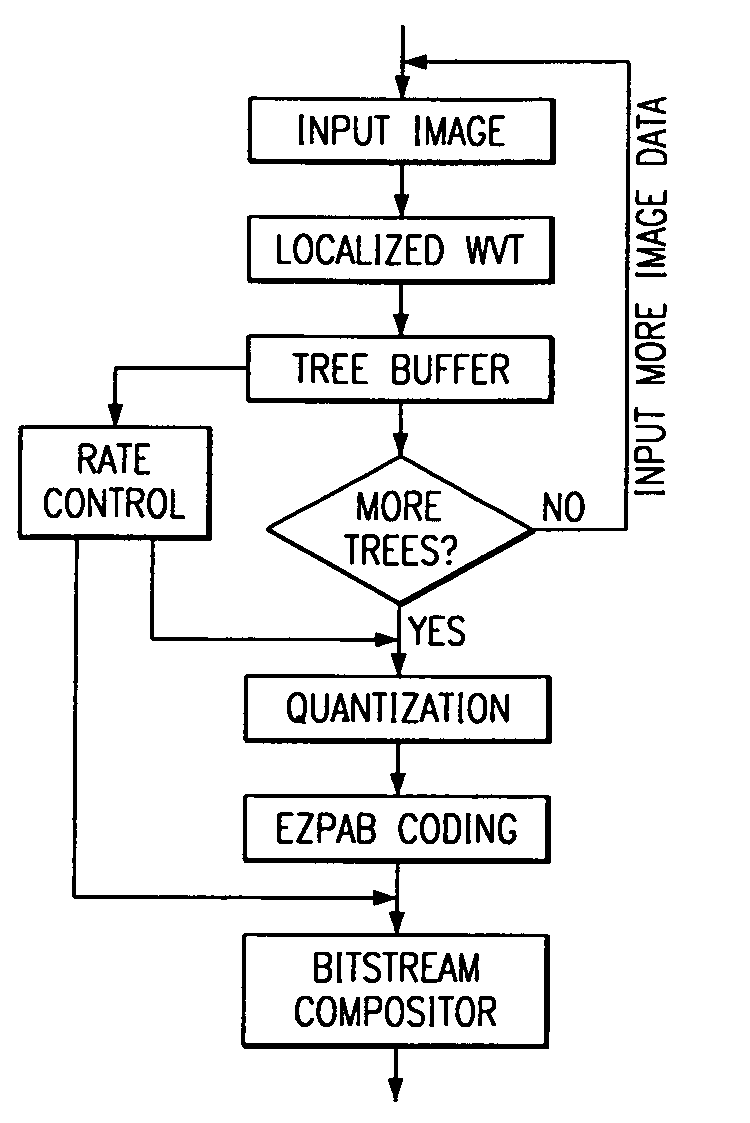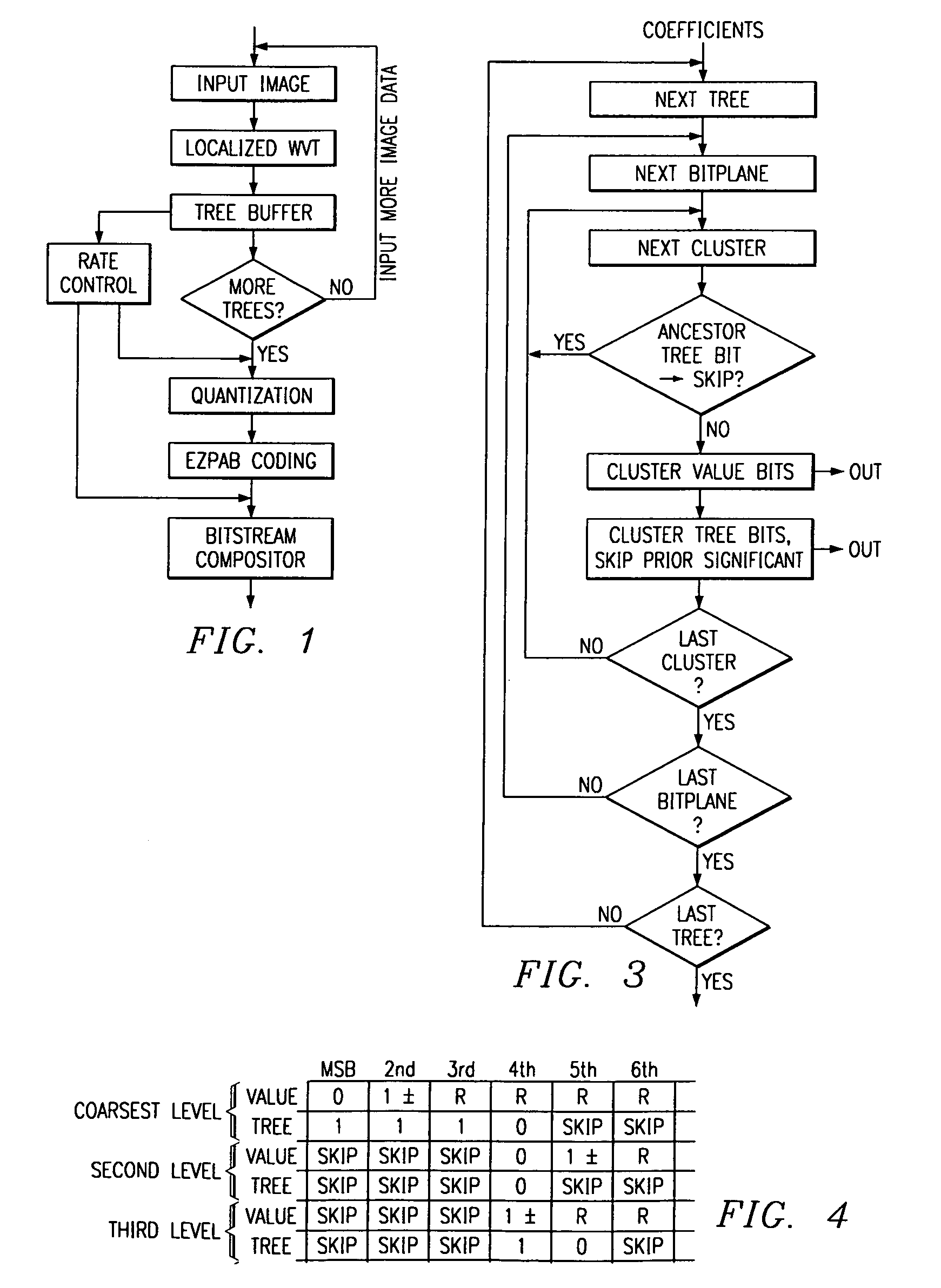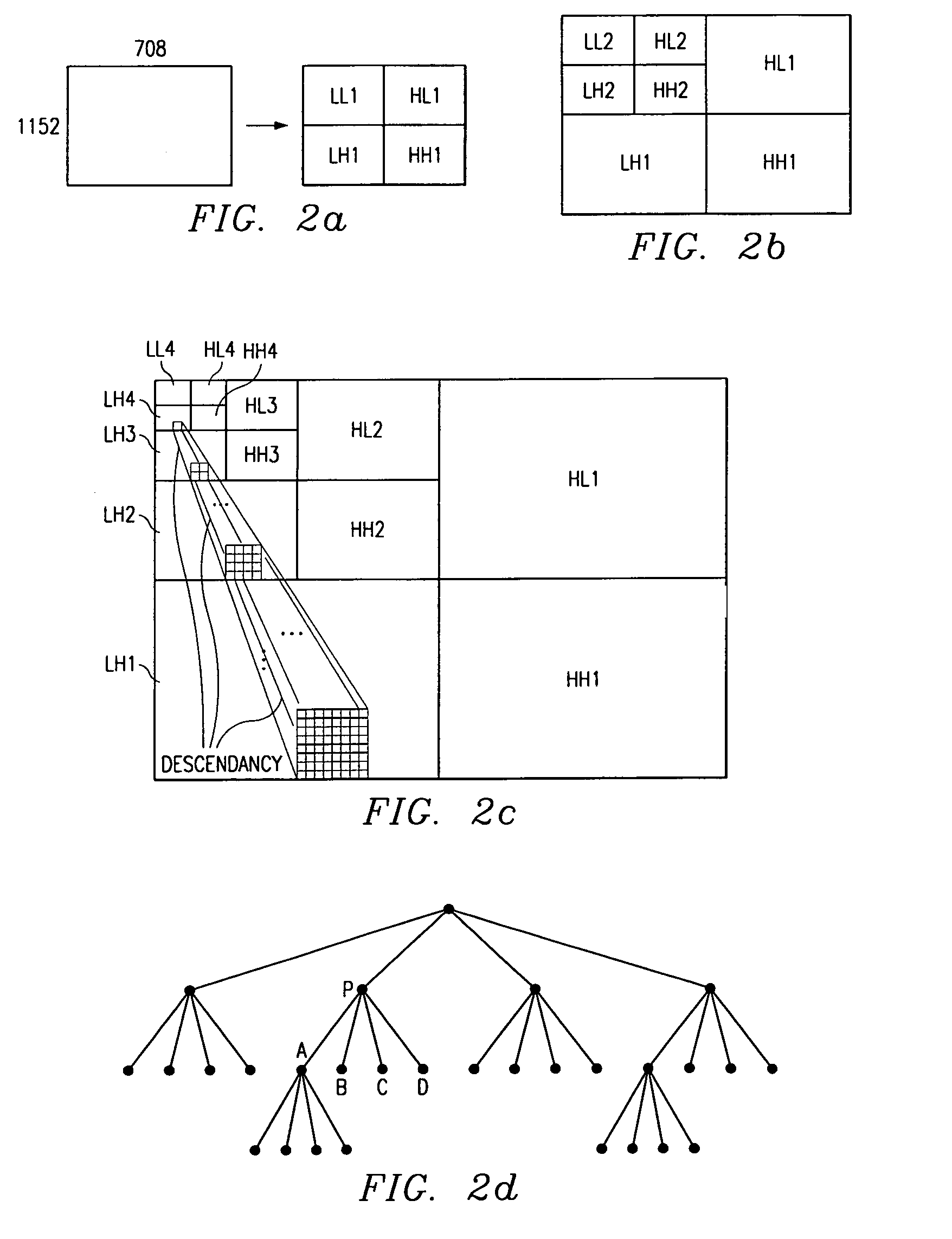Image coding using embedded zerotree patterns and bitplanes
a zero-tree pattern and image coding technology, applied in the field of digital image compression and coding and decoding, to achieve the effect of reducing memory consumption, and reducing computational complexity/power consumption
- Summary
- Abstract
- Description
- Claims
- Application Information
AI Technical Summary
Benefits of technology
Problems solved by technology
Method used
Image
Examples
Embodiment Construction
[0016]Overview
[0017]The preferred embodiment embedded zerotree pattern and bitplane (EZPAB) coding encodes the wavelet coefficients of an image bitplane-by-bitplane. At each location in the HH, LH, or HL subbands (other than at the finest decomposition level), there are two bits associated with that location in the bitplane: the bit that represents the value of the wavelet coefficient at that location (value-bit), and the bit that represents the significance of the quadtree (zerotree) that is rooted at that location (tree-bit). Encode the value-bit and tree-bit for all four neighbors that have the same parent, and go from one four-coefficient cluster to the next, from the coarsest decomposition level to the finest decomposition level, and from one tree-block to the next. The value-bits can be further classified as significance value-bit, sign value-bit, and refinement (of magnitude) value-bit. Following the scanning procedure, good coding efficiency can be achieved even without any ...
PUM
 Login to View More
Login to View More Abstract
Description
Claims
Application Information
 Login to View More
Login to View More - R&D
- Intellectual Property
- Life Sciences
- Materials
- Tech Scout
- Unparalleled Data Quality
- Higher Quality Content
- 60% Fewer Hallucinations
Browse by: Latest US Patents, China's latest patents, Technical Efficacy Thesaurus, Application Domain, Technology Topic, Popular Technical Reports.
© 2025 PatSnap. All rights reserved.Legal|Privacy policy|Modern Slavery Act Transparency Statement|Sitemap|About US| Contact US: help@patsnap.com



